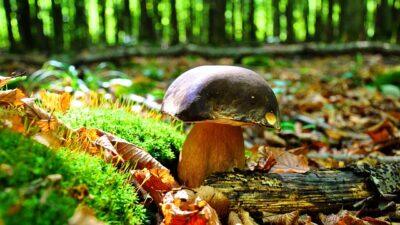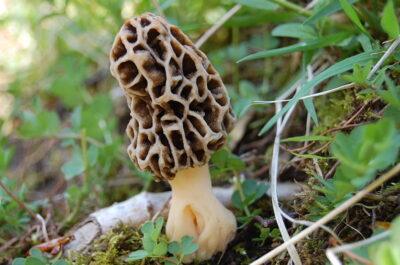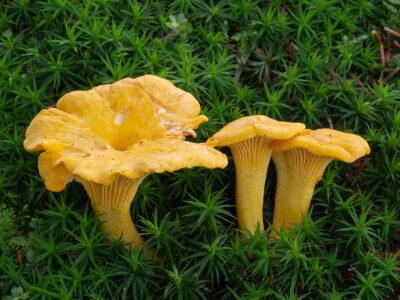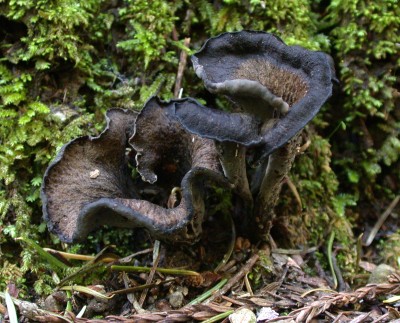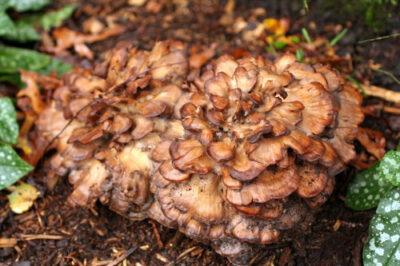I have been gathering wild fruits, vegetables and other wild, edible plants for more than 40 years. Every walk I take into a field or forest presents me with new combinations and possibilities for something that can be consumed as a survival food or as part of a great meal. However, I also find myself looking with alarm at many wild plants that I know to be toxic, if not deadly. This is especially true for mushrooms.
For a number of years when my sons were younger I was involved in Cub Scouts and Boy Scouts. One of the things I would do at troop campouts and jamborees is conduct field classes on foraging edible, wild plants.
This always concerned me because many young boys would quickly get the idea in their head that they could eat anything out there. As a result, I would always spend the first half of our hike identifying poisonous wild plants. I wanted to send the message that a lot of what grows in the wild knows how to defend itself, and poison is the first line of defense that many plants present.
Wild Plants Can be Poisonous
In that regard, some mushrooms top the list. So we’re going to begin with a review of the bad guys. Here’s a link to photos of the most common poisonous mushrooms. They tend to grow in the ground and often have unique characteristics in terms of coloration and shape. Unfortunately, some look common and similar to popular edible mushrooms, such as the “false morel.”
“When it Doubt, Throw it Out”
That’s the mantra for mushroom foragers. Even experienced mushroom hunters will take a pass on a questionable mushroom. If you’re in doubt don’t even harvest it. Check it with your field guide and if you’re not sure, don’t even put it in the bucket.
This may discourage you from mushroom foraging, but don’t let it. Some edible varieties are distinctive, easy to spot and have characteristics you can easily identify. It also helps if you take your first few forays into mushroom land with a mushroom expert, but if you don’t know anyone with that experience we’ll hopefully give you some preliminary advice.
Where to Find Wild, Edible Mushrooms
Mushrooms are a fungus and as a result are ubiquitous. They’re everywhere from our backyards to fields and forests. Many grow from rotting tree stumps or composting plant concentrations. They emerge quickly, usually in the night. And they deteriorate just as quickly.
Typically if they emerge from the ground there is a composting source beneath the soil such as a rotting tree branch or a layer of compacted leaves and grasses. It’s sometimes hard to find ground mushrooms unless the ground is relatively clear of brush, grass and scrub. I’ve had great luck walking through stands of pine because the needles act as a natural mulch and the mushrooms will easily poke through the carpet of needles. I gathered close to 100 morels in a small stand of pines this way a couple of years ago. In the fall, many mushrooms emerge from the knots of tree branches that have died and are in some state of decay. That’s why you have to always remember to look up.
One thing you’ll learn quickly is that mushroom foraging is going to leave you turning your head and neck like a jet pilot. They grow on the ground, on trees and stumps at eye-level, and high in the dead branches of trees above you. Just take your time and enjoy the casual pace of your hike.
The following are five mushrooms commonly found:
1. Morel
These appear in early to mid-spring after the first wildflowers begin to emerge. They are considered an absolute delicacy in many parts of North America. They tend to grow in groups and can be dried for later use, or used within a few days to a week after harvest. Pay close attention to the photos and take note of the photo of the false morel.
2. Golden chanterelles
Another very popular mushroom that grows across North America and appears from June to September is the chanterelle. They’re usually found in the woods, often in pine stands or under stands of oaks and maples.
There are two similar mushroom varieties that are not poisonous but toxic to some degree, so do your homework.
3. Black trumpets
Black trumpets are related to chanterelles but have a distinctive, trumpet shape. It’s the kind of mushroom you would typically avoid, but if you’ve found a true black trumpet they are very good to eat. They tend to grow out of rotting stumps
and deadfalls in deciduous forests.
4. Porcini mushrooms
Porcini tend to emerge from compost in the ground and can be found in fields and forests. Their color varies from a light red to shades of brown. Make sure you use your mushroom guide or follow the link above to correctly identify them.
5. Hen of the woods
This is considered the bonanza for any mushroom forager. They have a wonderful flavor, keep well, and grow in bunches up to 50 pounds. They appear in the fall and grow on the trunks of deadfall trees and the base of stumps. The largest bunch I ever harvested was about 20 pounds and I
quickly called it a day after that find.
When Are Mushrooms at Their Best?
The day after first emergence is the prime time to harvest mushrooms. It may be hard to know this has occurred if you’re exploring an area that’s new to you, but their color, texture and overall appearance should look fresh, yield when squeezed and have no powdery spores present. Spores are essentially mushroom seeds and if you’ve ever kicked a mushroom in a field to reveal a puff of what looks like smoke, you know what the spores look like.
Mushroom Harvesting Tools
The tools you use to harvest mushrooms can vary from gloves and a bucket to long poles made from electric conduit with a flat blade at one end to cut the stems of tree mushrooms. Here’s a checklist if you’re going out to do some serious mushroom hunting:
- Gloves
- 1 to 5 gallon plastic bucket
- Knife for slicing stems from the ground or deadfall trees
- 1 gallon plastic bags if you want to separate species of mushrooms
- A tree pole usually in sections and often made from thin tubes of electric conduit.
- A Field Guide to Wild Mushrooms
If you are planning to do some serious tree mushroom hunting you might consider a net as well. This can be a fishing net or butterfly net. The reason is that mushrooms are delicate and if they fall onto hard ground, branches or even your hand, they can break into numerous pieces. A net gives you a fighting chance to catch it in one piece.
Cleaning and Keeping Your Wild Mushrooms
Wild mushrooms should be refrigerated in the vegetable crisper drawer of your refrigerator. Do not wash them before packaging them in their plastic bags. Try to use them within a few days of harvest. Before use, wash them under cold, running water. Many disagree with this washing step, but as a former chef I know it has no adverse effect. Let them drain on paper towels a bit before slicing or dicing and adding to a salad or sauté pan.
You also can dehydrate wild mushrooms and reconstitute them later. Use a standard food dehydrator and if the mushrooms are large you will want to slice them before dehydrating them. If properly dehydrated, mushrooms can be refrigerated, frozen or stored in the pantry.
What mushrooms would you add to the list? What advice would you add? Share it in the section below:
 Off The Grid News Better Ideas For Off The Grid Living
Off The Grid News Better Ideas For Off The Grid Living

